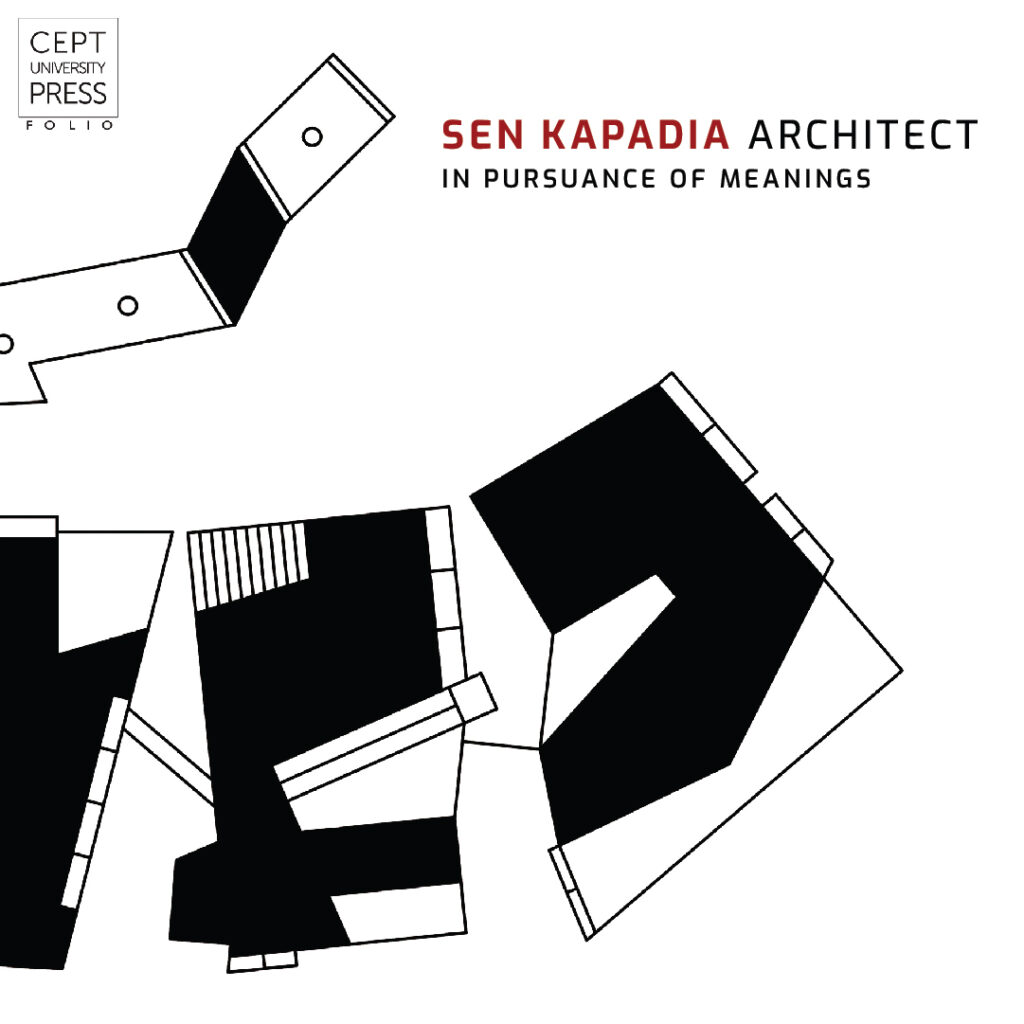Review of Sen Kapadia: In Pursuance of Meanings

One of the interesting things about architecture is that – like a novel – it is not a linear medium. Though a story takes place in a defined built setting, the uniqueness of its telling makes or breaks the narrative. Certainly, a building is a statement of a client’s requirements; but again, the real architecture happens in its unfolding – the deviations, the rich asides, the uncalled for diversions that mask the mundane ordinariness of packaged space, and create instead, lingering moments of surprise and shadow.
If ever there was a novelist of space, Sen Kapadia is one. While expressing great admiration for the work of the modern masters – he studied and worked briefly under Kahn on the Indian Institute of Management in Ahmedabad, when the project was in construction stage under the National Institute of Design – he broke away quickly into his own formal and expressly sculptural forms. Unlike most architects of his time – the reverence for modernism’s austere cemented vocabulary was quickly discarded for a more lyrical expression of plan and colour and light. In his early work for EPCO in Bhopal there was an almost carefree painterly composition of building parts – away from the grid and into a more fluid vocabulary.
A sudden departure from the orthogonal organization into a curving squiggle – a snail struggling against the forces of rectilinear oppression – gave his buildings attendant pauses of visual disclosure: a source of light revealed, a wall curving away, setting an unknown non-direction. The introduction of angles, and an easy tangential freedom, released the buildings from the tiresome formulism of geometry into a planned dissonance, resulting in a sculpted effortless landscape.
Also read:
Through much of his career, Sen followed these, his own self-created artistic dictates. Even in his most recent work, the Post Graduate Campus for the National Institute of Design, which forms the primary subject of the book ‘In Pursuance of Meanings’ architecture is discussed and debated as an art form.
The thrust of the writing is a conversational exchange between two architects, Doshi and Kapadia, and artist Atul Dodiya. The discussion is open ended as any relevant discussion should be; but it carries the reader from specific architectural details into art and technique, across life and philosophy – addressing ideas on the value of museums, the uses of culture – all amid the making of architecture. In its background, the design of the institute hovers as a reminder of the physical mass that generated these ideas. The angular disjointedness of the NID complex is deliberately created to cause psychic disturbances in space, and hence allow for accidental discoveries of areas where students can informally congregate. The building plan fragments in a reading that is indecipherable in its spread, but its real experience in the movement from place to place is carefully calibrated. The amalgamation of the sequence from courtyard to garden across angled ramps, is calculated to draw you into constantly changing space. It is here that Sen’s architecture excels in keeping alive a kindred spirit, the space always in flux, keeping the viewer guessing. Yet the randomness accrues and unfolds as you move between the blocks; the building mass – at times overwhelming and weighty – suddenly engulfs you, then slowly dissipates, dissolving into a miniscule courtyard, or revealing the open horizon on a graded terrace. Like much of Sen’s earlier work, the structure’s massing and decomposing is an exercise in careful assembly and cutting away – a shearing done not for a light-hearted effect, but for a conscious spatial trial and error. The introduction of a medieval street is an important orienting marker in the forbidding asymmetry. It is where modernism’s uncompromising planes meet the private and personal, and make for a compelling story-line.
Like Sen’s own work, the book is itself a unique composite of graphics and art, both painterly as well as representational. Its wish to be inclusive of all mediums makes for a more invigorating read. Deftly edited by architect Pinkish Shah and designed by Studio Anugraha, it follows thankfully none of the conventions of architectural monographs, and charts its own path as an intelligent and artistic presentation of the work of a thoughtful architect.
The author is a Delhi based architect, artist, author and sculptor








